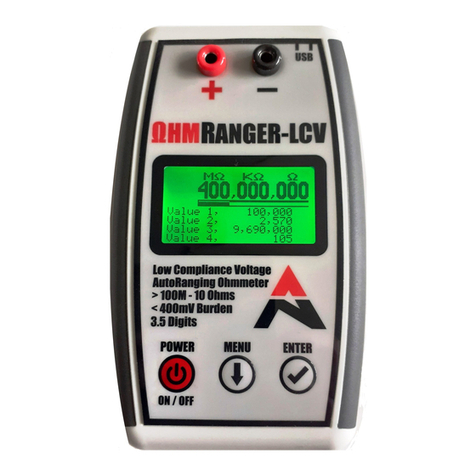3
NR-01 Instruction Manual V2.3 Revised 05 Jan 20
TABLE OF CONTENTS
1 Preface................................................................................................................................4
1.1 The User..............................................................................................................................4
1.2 Conventions Used in This Manual.......................................................................................4
1.3 Explanation of Safety Warnings...........................................................................................4
1.4 Obtaining Documentation and Information..........................................................................4
2 NanoRanger .......................................................................................................................5
2.1 Utility and Employment........................................................................................................5
2.2 Theory of Operation.............................................................................................................5
2.3 Technical Data.....................................................................................................................6
2.4 Compliance..........................................................................................................................7
2.5 Guide to Product..................................................................................................................7
2.6 Understanding the User Interface........................................................................................8
2.7 Device Set-Up .....................................................................................................................8
2.8 NanoRanger Menu Structure.............................................................................................10
3 Safety................................................................................................................................13
3.1 Using NanoRanger Safely .................................................................................................13
3.2 Guide to Graphical Symbols..............................................................................................14
4 Taking Manual Readings ................................................................................................16
4.1 Switching NanoRanger On .............................................................................................16
4.2 Automatic Range-Switching............................................................................................16
4.3 Setting the Range Limit...................................................................................................17
4.4 The Signal to Noise Ratio (SNR)....................................................................................17
4.5 Maximum and Minimum Readings .................................................................................17
4.6 Power Off........................................................................................................................18
5 Taking PC-Controlled Readings - SCPI.........................................................................18
5.1 SCPI Mandated Commands...........................................................................................18
5.2 SCPI Required Commands.............................................................................................19
5.3 Device Commands..........................................................................................................19
6 Storage, Transportation and Disposal ..........................................................................23
6.1 Storage ..............................................................................................................................23
6.2 Packaging and Transportation...........................................................................................23
6.3 Disposal.............................................................................................................................23
7 Maintenance.....................................................................................................................24
7.1 Replacing the Batteries......................................................................................................24
7.2 Cleaning.............................................................................................................................24
7.3 Recalibration......................................................................................................................24






























